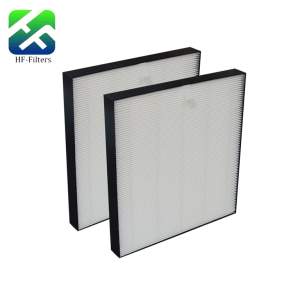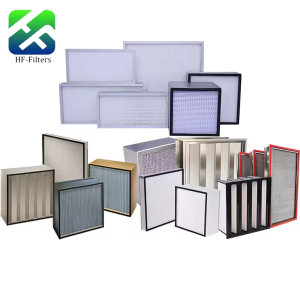As environmental pollution intensifies, the demand for filters is growing increasingly. As a key piece of environmental purification equipment, filters can effectively remove particles and pollutants from the air, protecting people’s health. When selecting a filter, it is particularly important to understand its efficiency rating and the corresponding particle size it filters. This article will classify filter efficiency ratings and explain their associated filtration particle sizes, helping readers choose a filter that best meets their needs.
A primary filter is a type of filter mainly used to remove large and coarse particles from the air. Its efficiency rating is typically categorized under the “G class,” and it filters particles within the size range of 5 to 10 micrometers. Primary filters are suitable for locations with relatively low filtration requirements, such as industrial workshops and warehouses.

- Medium-Efficiency Filters
A medium-efficiency filter is another type of filter, with better filtration performance than primary filters. Its efficiency rating is usually classified under the “F class,” and it filters particles in the size range of 1 to 5 micrometers. Medium-efficiency filters are applied in places that require higher filtration standards, such as hospitals and laboratories.

- High-Efficiency Particulate Air (HEPA) Filters
HEPA filters are high-performance filters, offering superior filtration compared to both primary and medium-efficiency filters. Their efficiency rating is generally categorized under the “E class,” and they filter particles within the size range of 0.3 to 1 micrometer. HEPA filters are ideal for environments with particularly strict air quality requirements, such as operating rooms and cleanrooms.

ULPA filters are advanced filters, boasting the best filtration performance among all filter types. (Note: The original text mentions, which is a misnomer; the correct term is ULPA filter.) Their efficiency rating is typically classified under the “H class,” and they filter particles in the size range of 0.1 to 0.3 micrometers. ULPA filters are used in settings with extremely high air quality demands, such as microelectronics manufacturing workshops and biological laboratories.

Filter efficiency ratings and their corresponding filtration particle sizes are crucial factors to consider when choosing a filter. Primary filters suit locations with low filtration needs; medium-efficiency filters for places requiring higher filtration; HEPA filters for environments with particularly strict air quality standards; and ULPA filters for settings with extremely high air quality requirements. Selecting the right filter based on the needs of different locations can better protect people’s health.
It is hoped that this article will help readers gain a better understanding of filter efficiency ratings and their corresponding filtration particle sizes, enabling them to make informed decisions when selecting a filter. If you have further questions about filters or need more information, please feel free to contact us.

